When most people begin to store food they begin with wheat. Why is that? Not everyone knows how to use wheat but may have heard that it is good to store, so that is where they begin. It is true--wheat is great to store. But what kind of wheat? How should it be stored? Once you have wheat, what can you do with it? And, why is it so great to store?
What kind of wheat?
The most common types of wheat grown in the United States are red and white wheats. Varieties include, hard red spring, hard red winter, hard white winter, soft white spring, and soft white winter. Deciding which wheat to store depends on what you will do with it.
Hard wheat is produced in areas that have dry temperature climates. The kernels are hard in texture, small, red, and have a strong gluten. Gluten is what gives wheat cohesive strength and allows it to stretch, expand, and retain gases as fermenting dough expands. This is excellent for making hearty whole wheat loaves of bread or to use in recipes as an extender for red meat. Hard red winter wheat is also the most common wheat available. Hard white winter wheat contains a more delicate flavor than the hard red wheat and can be used to make light and fluffy bread, rolls, and scones. It can also be used in recipes as an extender for white meat. Both of these varieties of hard wheat are high in protein and fiber.

The soft white classes of wheat are produced in areas of mild winters with adequate moisture. White kernels are larger and plumper than red wheat kernels, are of a softer texture, and have a weaker gluten strength. This wheat is used to make flaky pastries, pie crust, cakes, crackers, and breakfast cereals. Because of its lower gluten and protein content, it is not recommended for use in breads.
How should it be stored?
Wheat is one of the longest storing food items around. Whole wheat kernels will store longer and better than when ground up into flour. When storing your wheat at home, make sure it is in containers specifically identified on the label as food storage containers. Round containers are best when storing wheat since wheat gives off heat and square containers stacked closely together may not allow this heat to escape.
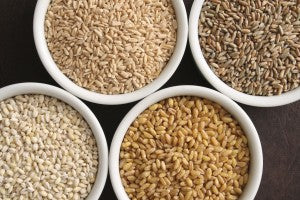
It is important that wheat doesn’t have a moisture content level higher than 10 percent. A higher moisture content than this causes damage to the wheat and exposure to oxygen may cause some forms of bacteria to grow. Storing wheat in a cool, dry place is the easiest way to keep moisture content low. A properly used oxygen absorber will also keep exposure to oxygen minimal.
A storage temperature of 40-60° F results in fresher wheat. However, 60° F and above is still acceptable. Food storage containers should not be stored directly on a cement floor to prevent rusting and pest contamination. Wheat should also be stored away from apples, onions, potatoes, etc., since the odor or flavor may transfer to the wheat.
What can be done with it?
Wheat adds variety to your food storage. Most people think only of using wheat as flour in bread products. But wheat can be used for much more. Wheat can be cracked, sprouted, ground into flour, and even grown as wheatgrass.
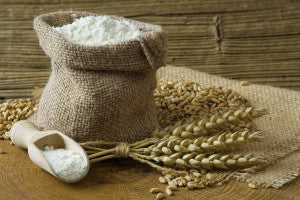
Try the flour in noodles, pie crust, pastries, muffins, cookies, or anytime a recipe calls for flour. Cracked wheat by itself makes a great hot cereal. Try it as a meat extender for hamburgers, meatloaf, lasagna, pizza, spaghetti sauce, sloppy joes, chili, or soups. Simply crack the wheat in a blender, grinder, or mill on a coarse setting. Cook your hamburger, drain the fat, then add 2 cups of water and a half cup cracked wheat. Stir and simmer for 20 minutes, then add to your favorite recipes.
Sprouted wheat can be added to top off sandwiches and salads. Flour can also be used as a thickener in soups.
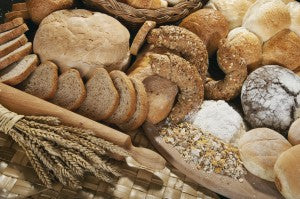
Anyone who invests in wheat as part of their food storage program should also invest in a grinder. If possible, obtain both the quick electric mill and the less expensive hand mill which can be used with just hand power. Now all you need to do is select a recipe, grind your wheat to the desired texture, and you're ready to go.
Why is it so great?
Wheat is packed with vitamins and minerals. Unfortunately, processing used to produce and refine white flour removes most of the valuable nutrients. Wheat kernels have three main divisions; the bran, the endosperm, and the inner embryo or wheat germ. The bran layer constitutes 14% of the wheat kernel and is removed when producing white flour. The bran is packed with vitamins A, C, and E, calcium, iron, and iodine. The bran also happens to be the best source of dietary fiber which aids in digestion and helps ward off disease. The wheat germ layer is an excellent source of vitamin E, as well as other vitamins and protein. Many important nutrients are removed when layers are separated during processing. For this reason, it makes sense to put whole wheat back into your diet.
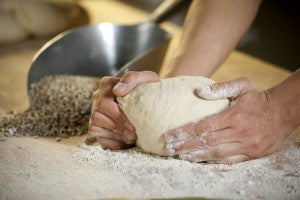
Pound for pound, wheat is one of the least expensive foods available. And, since grain products will expand in your stomach--satisfying you even if you eat less--using wheat products can help you stretch your budget by eliminating the need for store-bought, overpriced, and over-processed goods.
If you are concerned that your food storage may be lacking in protein, a good supply of wheat and beans will form a complete protein. Just a half cup of uncooked wheat contains 8 to 10 grams of protein. So, not only will wheat give you the protein needed for muscle growth and repair, but you will have a low-fat complex carbohydrate to give your body the energy it needs to make it through the day.
If you still aren’t convinced of the importance of storing and using wheat, check out our recipe section. As you begin to use wheat regularly you may be surprised by its versatility, and you will soon see that wheat really is the staff of life.





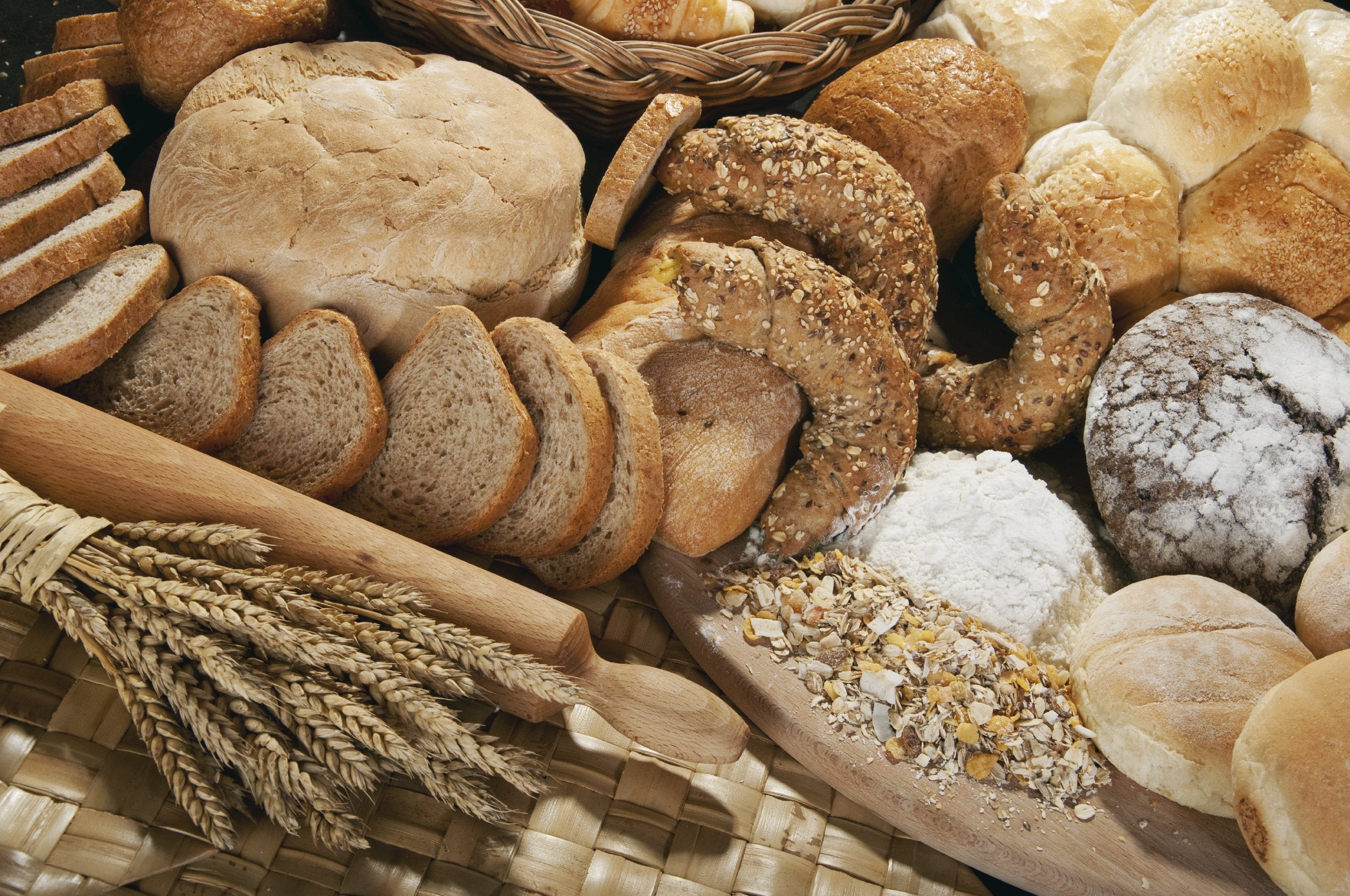





6 comments
Ann Dickman
I have just read the above article on wheat. Living in 2016 in a subdivision and not having a lot of space to store extra items this was the best educational read I have had in a long time. As our society is changing we all need to read and learn from this article. Very few people know about how to cook from scratch and I am 72 and didn’t know a lotabout the different wheats.
Denise Forand
In 1981 "I was 44 years old and i had anemia with low blood pressure" I started to use wheat, the hard red one,
about four months after using hard red wheat I realized I had a lot more energy and my skin was rosy and healthy.
I had many people say to me HOW DO YOU DO IT , your are full of energy and your skin is like a young girl.
We are now in year 2014 and still use hard red whole wheat, it’s delicious in muffins, cake, pie crust, in soup’s,
etc. and, yes I still get complements for my energy and my 77 year old skin.
beprepared
Jo,
Great question. In proper conditions (keeping in mind temperature, moisture, light, air-the enemies of food storage, as well as keeping them in proper packaging like double enameled cans or in superpails with oxygen absorbers and metallized bags) you’re wheat will last up to 25+ years.
Angela
Jo
You say wheat last a long time in storage, can you give me a better of exactly how long it lasts in storage?
beprepared
Hi Walt,
One cup of wheat produces 1 ½ cups of flour (usually with a couple of teaspoons extra) very consistently.It doesn’t even change based on how fine/coarse you grind your flour.
-Dawn
Walt
What I want to know is one cup unground wheat, makes how much ground wheat flour, cup wise